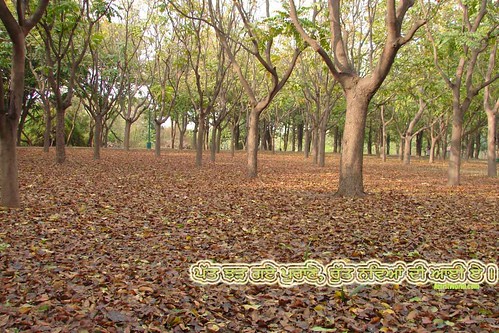(Amrit Pal Singh ‘Amrit’)
(Guru) Amardas Ji was born in Samvat 1536 Bikrami. His father’s name was Tejo (Tej Bhan) Ji. In Samvat 1589 Bikrami, (Guru) Amardas Ji was married to Mother Mansa Devi Ji. (Guru) Amardas Ji had two sons, Mohan and Mohari Ji, and two daughters, Bibi Bhani Ji and Bibi Dani Ji.
Once, a Brahman, named Durga Datt, met (Guru) Amardas Ji and said, “You will be worshipped by the people. The flywhisk will be waved over your head. The Kings will meet you with their offerings”.
When (Guru) Amardas Ji tried to donate him some sweets, Durga Datt asked, “Who is your Guru?”
(Guru) Amardas Ji replied, “I have not found the Guru yet”.
Pandit Durga Datt said, “I do not take anything from a person, who has not any Guru. It is a sin even to see such a person. When you find a Guru, only then I will accept your offerings”.
The words by the Brahman depressed (Guru) Amardas Ji. He, then, decided to find a true Guru for him. In Samvat 1590 Bikrami, (Guru) Amardas Ji went to Hardwar, a sacred city for Hindus, to take bath in river Ganges. He met Bhai Hari Ram Ji, who was reciting the holy hymns of Guru Nanak Dev Ji. (Guru) Amardas Ji was fascinated by the hymns. He decided to meet Guru Nanak Dev Ji. However, due to his busyness in his family affairs, he could not see Guru Nanak Dev Ji.
Guru Nanak Dev Ji established Sri Guru Angad Dev Ji on the holy throne in Samvat 1596 Bikrami. In Samvat 1598 Bibi Amro Ji, a daughter of Sri Guru Angad Dev Ji, was married to (Guru) Amardas Ji’s nephew.
Once, she was reciting this holy hymn of Guru Nanak Dev Ji: –
Maaroo Mahla 1, Ghar 1. Karni Kaagad Man Masvaani Bura Bhalaa Duye Lekh Paye. (Sri Guru Granth Sahib Ji, page 960).
(Translation of whole of the holy hymn: – Actions are the paper, and the mind is the ink; good and bad are both recorded upon it. As their past actions drive them, so are mortals driven. There is no end to Your Glorious Virtues, Lord. 1.Why do you not keep Him in your consciousness, you mad man? Forgetting the Lord, your own virtues shall rot away. 1. Pause. The night is a net, and the day is a net; there are as many traps as there are moments. With relish and delight, you continually bite at the bait; you are trapped, you fool – how will you ever escape? .2. The body is a furnace, and the mind is the iron within it; the five fires are heating it. Sin is the charcoal placed upon it, which burns the mind; the tongs are anxiety and worry. 3. What was turned to slag is again transformed into gold, if one meets with the Guru. He blesses the mortal with the Ambrosial Name of the One Lord, and then, O Nanak, the body is held steady. 4. 3.). (Sri Guru Granth Sahib Ji, page 960).
(Guru) Amardas Ji’s mind was pierced through with the arrow of love. He decided to meet Guru Angad Dev Ji. In Samvat 1601 Bikrami, he went to village Khadoor Sahib Ji along with Bibi Amro Ji to have the holy ‘Darshan’ of Guru Angad Dev Ji.
(Guru) Amardas Ji started to live in the holy company of Guru Angad Dev Ji in Sri Khadoor Sahib Ji. He served the Guru for 7 years. In Samvat 1602 Bikrami, (Guru) Amardas Ji’s daughter Bibi Bhani Ji was married to (Guru) Ramdas Ji.
In Samvat 1609 Bikrami, he was established the third Guru, by Guru Angad Dev Ji.
Guru Amardas Ji strengthened Guru’s free kitchen (Guru ka Langar), which was started by Guru Nanak Dev Ji and developed by Guru Angad Dev Ji. It was the injunction of Guru Amardas that none would have his audience unless he had first eaten from the Langar. It was a good effort to remove the caste restrictions and prejudices of untouchability. All persons of all castes, high or low, rich or poor, Brahmans or Sudras, Hindus or Muslims, used to sit in the same line and eat the same food from Guru’s kitchen. Even Akbar, the Emperor of India had to take food in the Langar.
He established his son-in-law Guru Ramdas Ji on the holy throne and left for his heavenly abode in Samvat 1631 Bikrami and the spirit blended with the Master Spirit.

